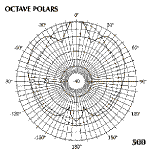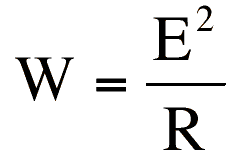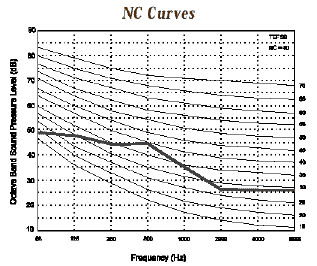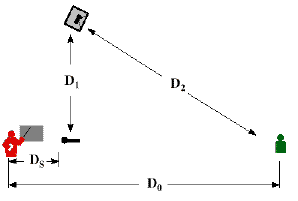|
|
click here
to download the pdf version of this article!

Many end-users assume that sound system design involves only
selecting a list of equipment and interconnecting it. If this
were true, then most sound systems would work and most venues
would have excellent sound reproduction. Unfortunately, this
is not the case. The sound system must be matched to a venue
much in the same way that a custom suit must be fitted to an
individual. Unless one has the knowledge and experience to fully
evaluate the acoustic environment and to evaluate the interaction
between array components, it is impossible to design an appropriate
system. Perhaps part of the problem lies in the fact that the
human ear/brain system is very tolerant of frequency-domain
artifacts and excessive delay with regard to music reproduction.
Ironically, most individuals can easily detect differences in
video quality and can easily be shown why better video equipment
costs more. Most listening tests are performed without a "golden
standard" to use as basis for quality and accuracy. Musical
quality is very subjective under these conditions. Most everyone
knows what red looks like, so judgements of video quality are
objective. But what should a saxaphone sound like? This is why
we always recommend speech as a program source for evaluating
system performance, as well as making comparisons of products.
Otherwise, the process is completely subjective and meaningful
comparisons will be difficult if not impossible. Unfortunately,
many end-users are swayed to purchase a particular system by
listening to the reproduction of a music CD. Of course, music
reproduction is important. But even more important are the communication
properties of a system. Music is essentially useless in evaluating
this critical area.
What must one know in order to design an appropriate sound
system for a venue? This list (in no particular order, since
all are essential) is intended to help someone pre-qualify themselves
for this task. If you have a customer that considering doing
their own design, then encourage them to read this first.
| 1. And Understanding of the Various Types of Sound
Fields
This includes the direct field, early-reflected field,
and the reverberant field. Since your loudspeaker system
will generate all of these, and understanding of each
is required to achieve the appropriate energy ratios at
listener seats. |

|
| 2. Electrical Power Required Calculations
An understanding of loudspeaker sensitivity, power handling,
and the inverse-square law are required to select appropriate
amplifiers for a system design. The designer must be able
to manipulate these parameters and achieve the proper
balance between them. Failure to do so results in systems
that are underpowered (distort before reaching the desired
level), or overpowered (average operating level is too
high resulting in blown loudspeakers). |

|
| 3. Transducer Directivity and Interaction
Effective array design is impossible without an under-standing
of loudspeaker directivity. This includes not only the
on-axis Q rating of the loudspeaker, but also the loudspeaker's
coverage angles as a function of frequency. Many systems
fail because there is either insufficient coverage or
too much. The former results in soft spots in the audience
coverage, and the latter results in severe phase cancellation
effects that cause " dead spots" in audience
areas.
No system can improve on the signal that is presented
to it. The system designer must make certain that appropriate
signal-to-noise ratios and direct-to-reflected ratios
are established at each microphone, and that sufficient
signal level is delivered to the mixer. |

|
| 4. Local Electrical Codes and Proper Rigging Practices
Even a good sounding system is not a success unless it
is safe. Few end users are aware of applicable electrical
codes concerning equipment and wiring. Failure to use
appropriate wire gauges and insulation types can create
hazards. Proper rigging is not a trivial matter, and the
qualified sound system designer will make certain that
flown loudspeakers remain where they are flown. This involves
selecting the correct rigging hardware, as well as appropriate
mounting points in the venue. Audio professionals know
when they are in over their head and should call a qualified
structural engineer in on a project. |

|
| 5. Ohm's Law for AC and DC Circuits
Ohm's Law describes the relationship between voltage,
current, and resistance in electrical circuits. A basic
understanding of it is required to make judgments concerning
device loading, line termination, and wire gauges. Many
common sound system defects are simple violations of Ohm's
Law (Y-ing of outputs, etc.) |

|
| 6. Measurement and Evaluation of Ambient Noise
Conditions
An adequate signal-to-noise ratio is an essential part
of any good sound reproduction system. The competent designer
can measure and specify acceptable ambient noise conditions,
as well as diagnose sources of excessive noise, such as
air conditioner and heating systems. It is impor-tant
to understand how to use a sound level meter, as well
as the differences between the weighting scales. The well-equipped
audio professional possesses the instrumenta-tion to quickly
measure ambient noise parameters. |

|
| 7. Achieving Acoustic Gain
A sound system is useless if it goes into feedback before
adequate acoustic gain is realized. A system de-signer
should understand the trade-offs between the parameters
that determine acoustic gain, and how to make the best
compromises to meet the needs of the client.
Of course, there are many others, but if any of these
criteria intimidate you, consider seeking the help of
a qualified consultant or contractor in the design of
your system. The cost of such a service is small compared
to the ramifications of purchasing inappropriate equipment
or poor installation practices. pb |

|
|